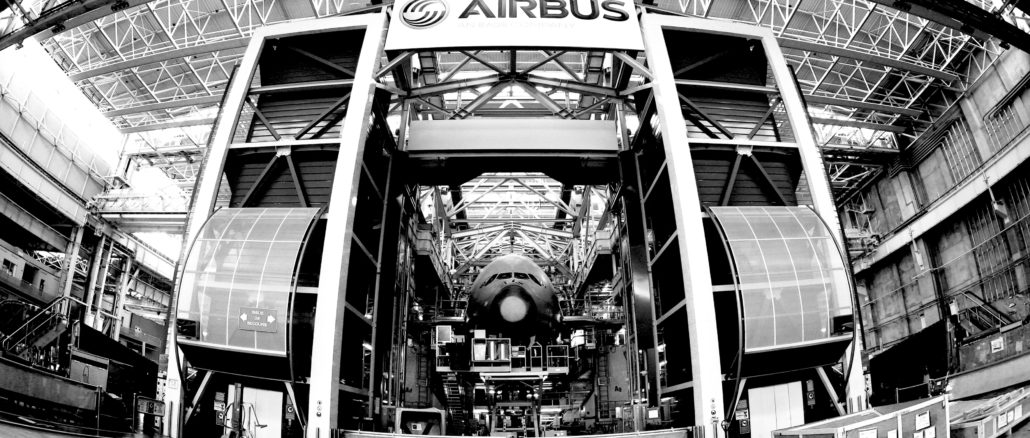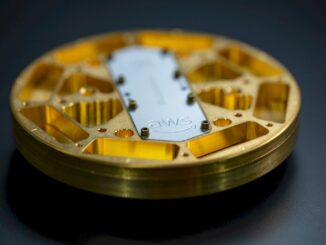
Quantum computing is often portrayed as a way to solve esoteric problems that can’t be attempted with conventional computers. But that’s not how Airbus is thinking about using the technology.
The company recently kicked off its Airbus Quantum Computing Challenge, a global initiative whose goal is to bring in QC experts interested applying the technology to help solve flight physics problems used in aerospace applications. The challenge is open to individuals or research teams – post-grad students, PhDs, academics, researchers, startups, and other professionals in the field – with proven experience in quantum computing.
Airbus has laid out five focus areas for the competition: computational fluid dynamics, partial differential equations, aircraft climb efficiency, wing box design, and aircraft loading. Currently, these areas are addressed with traditional engineering approaches, which rely to a large extent on HPC. All of them are critical to the company’s aerospace business and their ability to differentiate their products from the competition.
The goal here doesn’t seem to be to save money on high performance computing expenditures. (The company uses only about 3 percent of its IT budget on HPC.) Rather, Airbus seems to be interested in the potential of quantum computing to deliver better results than brute-force simulations and modeling, as well as being able handle larger problem sizes than can feasibly be addressed with that of digital computers.
This is by no means Airbus’s first go-around with the technology. In 2015, the company set up quantum computing unit at its facility in Newport, United Kingdom. A year later, Airbus invested in QC Ware, a quantum computing software startup that is looking to bring its technology to enterprise users. Airbus has also used one of D-Wave’s 2000-qubit machines on a project that investigated the use of quantum annealing for fault tree analysis (FTA). In the aerospace industry, FTA is a method to determine failures of complex systems resulting from a combination of sub-system failures. It is typically used during qualification and certification of aircraft. Since FTA is an NP-hard type of problem, it was a good candidate for quantum computing.
The project entailed translating FTA software to a form that would work on a quantum annealer and benchmarking the runtime performance against a commercial SAT solver. What they found was that performance of the QC implementation was not related to the size of the problem and could be used in conjunction with a classic SAT solver to reduce runtime by a factor of four.
More importantly, it helped convince Airbus to continue exploring quantum computing for high performance computing use cases. Airbus new-found enthusiasm for quantum computing’s is reflected in their prediction that QC technology will “forever alter how aircraft are built and flown.” And that’s where the company’s new quantum computing challenge comes in.
As mentioned, one of the important focus areas will be computational fluid dynamics (CFD), a classic HPC application and a critical computational element of aircraft design. Specifically, CFD is used to determine aerodynamic behavior, the principle goal being to reduce drag and increase fuel efficiency. In this case, the challenge is to find a quantum computing algorithm that can solve this problem faster and at greater scale than a conventional implementation or, alternatively, be used in conjunction with one.
The closely related area of partial differential equations is another element of aerodynamics. The challenge in this case is more narrowly defined in that Airbus is interested in implementations that employ deep learning techniques via a quantum computing approach.
Airbus’s challenge for aircraft climb efficiency is motivated by the increasing importance of short-haul flights, where the take-off and landing segments take on relatively more importance than on longer flights. The goal is to reduce time and fuel costs during the initial climb, using quantum computing to deliver optimum cost/benefits.
The wing box design challenge centers around balancing the weight considerations and the integrity of the structure from which wing extends. It takes into a count a number of elements – airframe loads, mass modelling, and structural analysis – that must be simultaneously calculated. That not only makes the process time-consuming, but also susceptible to questionable assessments. Airbus thinks quantum computing would allow engineers to explore a much wider design space to reach the optimal design.
The fifth challenge has to do with improving an aircraft’s payload capability. Like the others, it has to balance a number of elements, in this case, revenue accrued from the payload, fuel expenses, and overall operating costs. The idea here is to use quantum computing to find an optimal aircraft configuration for payloads under different operational constraints.
If you are interested in taking on one of these challenges, check out the Airbus website that explains the parameters of the contest in more detail, as well as how to register. Submissions can be made through October 2019, with Airbus notifying the selected winners in the first quarter of 2020.





Be the first to comment